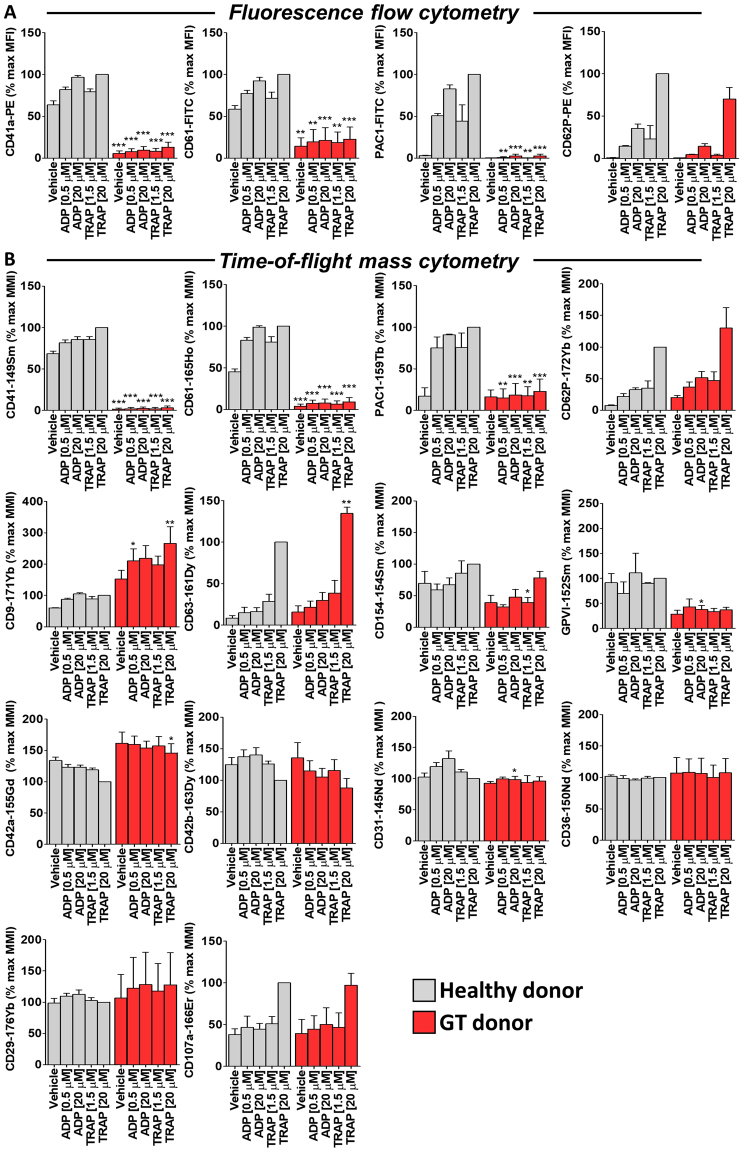Figure 5.
MC reveals novel alterations in the platelet surface expression of antigens in Glanzmann thrombasthenia (GT) patients. Citrate-anticoagulated blood samples from healthy donors (n = 3) and a GT patient (3 separate blood draws from the same patient on 3 different visits) were treated with vehicle, ADP (0.5 or 20 µM) or TRAP (1.5 or 20 µM) for 30 minutes in the presence of a fluorescent-tagged antibody cocktail (A) (CD41a-PE and CD61-FITC or PAC1-FITC and CD62P-PE) or a custom metal-tagged antibody cocktail (B) (CD41-149Sm, CD61-165Ho, PAC1-159Tb, CD62P-172Yb, CD63-161Dy, CD9-171Yb, CD154-154Sm, CD42a-155Gd, CD42b-163Dy, GPVI-152Sm, CD31-145Nd, CD36-150Nd, CD29-176Yb and CD107a-166Er). Samples were fixed in 1% formaldehyde and analyzed by flow cytometry or mass cytometry. Results are expressed as a percentage of the mean fluorescence intensity (MFI; flow cytometry readout) or mean metal intensity (MMI; mass cytometry readout) achieved with 20 µM TRAP in healthy donor platelets (means ± SEM; n = 3). Statistical analysis: 2-way ANOVA was used in conjunction with a Bonferroni post-test to indicate statistical significance; *P < 0.05, **P < 0.01 and ***P < 0.001. Abbreviations: ADP, adenosine diphosphate; FITC, fluorescein isothiocyanate; MC, mass cytometry; PE, phycoerythrin; TRAP, thrombin receptor activating peptide.

